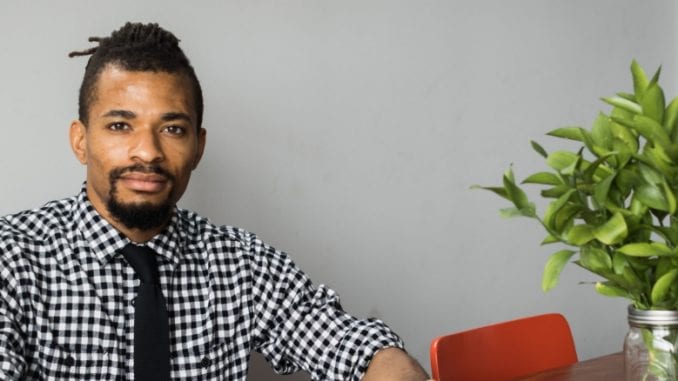
Justin Doggett, owner of Kyoto Black in Chicago, talks fine dining, coffee beer, and what he hopes to do in the future.
BY ASHLEY RODRIGUEZ
BARISTA MAGAZINE ONLINE
Photos courtesy of Justin Doggett
Justin Doggett owns Kyoto Black, a wholesale and consumer-facing cold-brew company specializing in Kyoto-style cold brew. In this interview, we learn more about how Justin got into coffee, the first job he took in the industry, and how working in fine dining has influenced the way he looks at his business and at coffee.
Ashley Rodriguez: Can you tell us a little bit about your life before you got into coffee?
Justin Doggett: I’ve been in coffee professionally ever since I graduated from University of Delaware in 2011. Before I found myself in coffee, I thought I would teach English in Japan. My major was East Asian Studies, and I’m more or less fluent in Japanese. Before that, I majored in Civil Engineering. One semester of that was enough for me to see that it was not a good fit. Once I changed majors, I had more time to study things that interested me, like Japanese and philosophy. Given my academic path, it’s clear I was destined to become a barista.
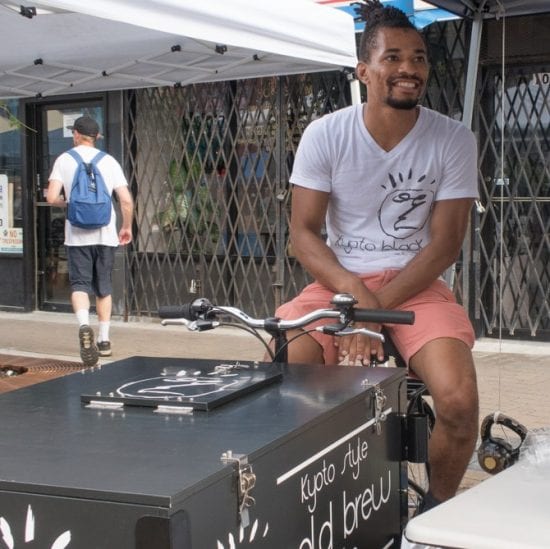
AR: What are some of your earliest coffee memories?
JD: I always enjoyed coffee well enough since I was a kid. I remember being 10 years old and getting a coffee from McDonald’s here and there. But I was never much of a regular coffee drinker until after I graduated from college. There was a small café in my neighborhood that served Intelligentsia Coffee. They were the only “third wave” café on the Southside of Chicago at the time. I walked in one day and tried my first good shot of espresso. I never knew espresso could be so sweet and have so many interesting flavors. From there, I was hooked on learning more about coffee and I applied for a job at the café. I went in for my interview and didn’t get the job. A few days later, I received a call. The guy they offered the job to turned it down (the pay was minimum wage, $7.25/hour) and they would give me the job if I wanted it. I took it, started from the bottom and built my way up.
About eight months into the job, I was looking to advance within the company and there was a potential spot that I wanted. I wasn’t even in consideration. Frustrated, I thought to look for another job. Randomly, I ended up receiving a job offer while dining at a new fine restaurant in Chicago. That restaurant is called Next, and it is the second restaurant opened by the Alinea Group. I started at Next as a food runner and offered my coffee expertise to the restaurant whenever I could. It was now that I began to experiment with Kyoto-style cold brewing at home.
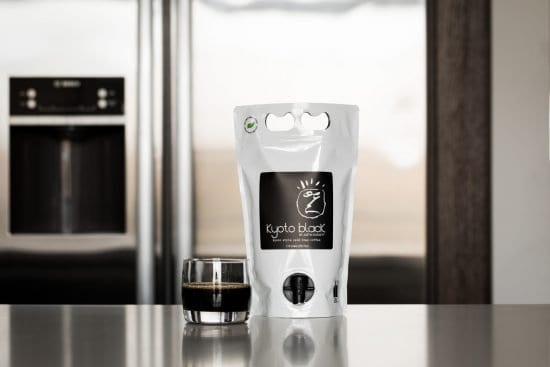
AR: What got you into Kyoto-style coffee? Why this method instead of other cold-coffee methods?
JD: My first time trying Kyoto style was in 2011. There was only one café in Chicago offering it, and because it was still new to the U.S., there was a sort of mystique around it. One day I decided to visit the café and try some Kyoto style for myself. I didn’t like the coffee that I had there. In retrospect, it was probably under-extracted. But I enjoyed the texture, smoothness, and the aromatics of Kyoto so much that I wanted to buy my own Kyoto-style brewer. After finding out that a brewer would set me back $400, I decided to build my own instead.
My prototype brewer had looks that only a mother could love. It was made from a separatory funnel, a cut-up condiment squeeze bottle, and a blender pitcher sitting in a bowl in case the contraption fell over. But it made some fine coffee.
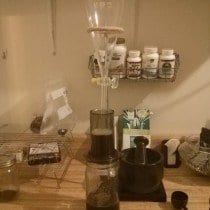
AR: How do you approach coffee? Do you have a philosophy or way of thinking about coffee?
JD: I approach coffee with a mindset that comes from my restaurant and martial arts experience. Mise-en-place is something you hear in restaurants a lot. It translates to “everything in its place.” The idea behind mise-en-place is that by having all your tools set and ready before you get deep into the actual task, you will be faster, more efficient, less prone to mistakes, and your work will be of a higher quality. When I left Next to become the head barista and trainer at Metropolis Coffee Company, mise-en-place was a core focus for training my staff. Even when making something as simple as a pourover, having your mise-en-place set will allow you to make consistently excellent coffee.
When it comes to making the coffee, I believe that you need a fundamental understanding of the nature of extraction. You need to understand the effects of ratio, grind size, water temperature, water mineral composition, dwell time, total dissolved solids, extraction percentages, etc. Build a basic understanding of all the finer details that make a great cup of coffee not only possible, but repeatable, and practice. That way of thinking is greatly influenced by my background in Brazilian jiu-jitsu.
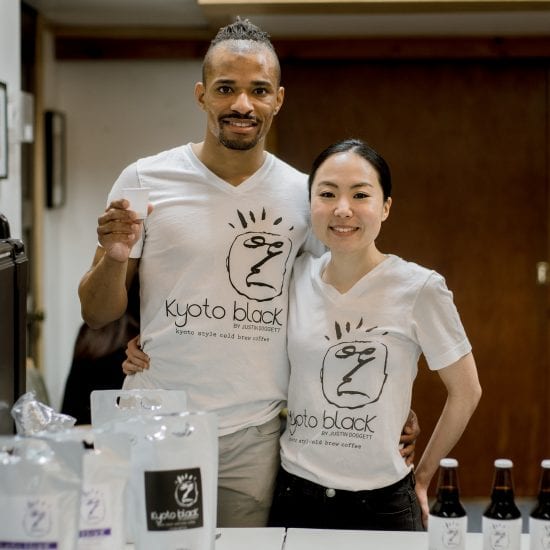
AR: What have you learned from your previous jobs?
JD: I could write so much on this topic, but to keep it simple, I learned that you must get the culture of the workplace right, first and foremost. If a company is going to strive for an ambitious goal, then that company will invariably create a great deal of internal and external friction. Culture is the scaffolding that keeps the whole thing from falling apart when it seems like the friction is too much.
AR: What have you learned being a business owner? What have been some of your struggles and successes?
JD: Again, I could write so much about this. I’ve learned how to take on problems head first, how to deal with local government bureaucracy, and I’ve learned about the value of other people’s attention. Seriously, if you’re planning to sell anything in life, you will need people’s attention.
My main struggle is staying focused. Ever since I was a kid, I’ve had the tendency to procrastinate and lose focus. I’ve noticed that building routines helps with this though. As for successes, I feel that I’m unusually patient when it comes to my business. There’s the tendency to think that “this is going to be my breakout moment” or “this article is going to put me on the map.” And of course that’s never the case. It’s a slow grind. You have to act quickly every single day. But the benefits take a long time to accrue and return, if at all.
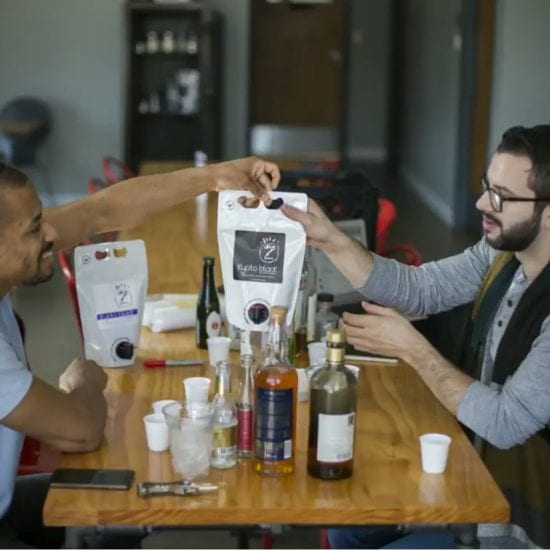
AR: You participated in the Uppers and Downers event and collaborated on a beer—what was that like? What sort of beer did you end up making together, and with what sort of coffee?
JD: I worked alongside Metropolitan Brewing and Metropolis Coffee Company to make a Helles German lager infused with a beautiful honey-processed coffee from Las Lajas in Costa Rica. It had a subtle cranberry sweetness and it was tart enough to maintain the beer’s sharpness. The Helles style was an interesting challenge because it is a light, low-ABV style of beer that is renowned for its clear flavor and appearance. Instead of steeping the beans in the beer itself, we finished the beer with Las Lajas-brewed Kyoto style by me.
Uppers and Downers is always a fun time. I’ve been as a guest, but this was my first time as a participant. There’s such a wealth of knowledge in the beer community, so it’s great to be able to collaborate with those guys. I’ve learned so much.
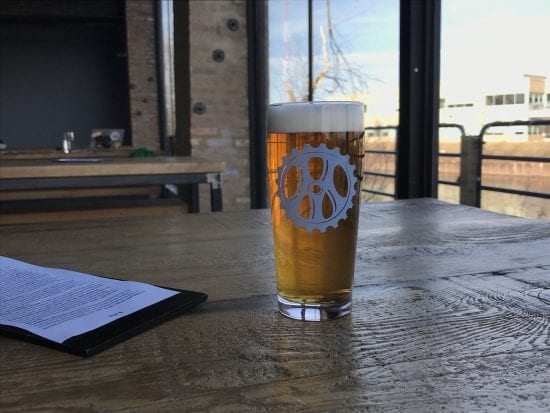
AR: What else in coffee interests and inspires you? I love that you have your own blog on your website and have commented on other coffee issues. What intrigues you and what do you wish more people were talking about?
JD: Lately, I’ve been super interested in roasting coffee. That’s the next frontier in my coffee journey. I have a friend who lets me practice on his Diedrich IR-5 and I’m reading up on how to ideally roast. Since my goal with Kyoto Black is to offer several different “labels” of coffee, roasting would allow me to completely tailor the experience.
AR: What’s next for you, both small and big? What’s a skill you want to learn or something you want to get better at?
JD: I want to get better at producing my own media. I’m working on a cold-brew cocktail book with my friend, who is an amazing bartender. We’re documenting the process, and I can see that recording good videos requires tons of practice.
Also, I’ll be making a ton of appearances on my mobile trike all around Chicago this spring and summer.
AR: What do you do in your spare time?
JD: I’m usually at jiu-jitsu three to four days a week. Other than that, I’m spending time with my wife, we’re besties.


Delighted to get a chance to read the interview.
Great shots.
Good wishes,
John (Francis) from Philadelphia